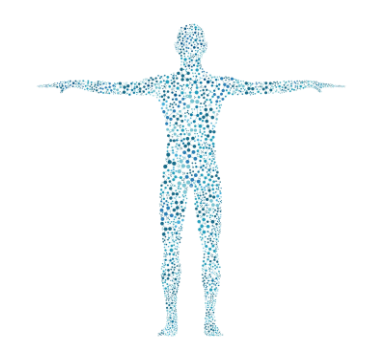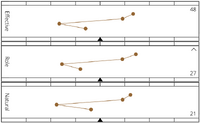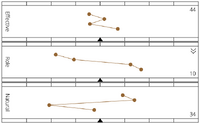Performance - Flow State
This article discusses the notion of flow state and how it is measured by the adaptive profile.
The article contains information that requires being GRI literate. Please refer to the brief information indicated in the notes if you are not.
Definition
"Being in flow," or "being in the zone," a flow state, is a state of deep and effortless immersion in an activity. The state of flow is characterized by a feeling of energized focus, full involvement, and enjoyment in the process itself.
The concept of flow was formally introduced and extensively researched by positive psychologist Mihaly Csikszentmihalyi, who is the leading authority on the subject[1].
Csikszentmihalyi first formulated the notion of flow, affirming that “happiness” does not adequately describe the state of contentment and fulfillment of purpose and meaning that one may find in life; this fulfillment is better encompassed by the concept of flow.
Characteristics of Flow
The experience of flow is defined by several key characteristics:
- Intense and Focused Concentration: All of one's attention is directed to the activity at hand.
- Merging of Action and Awareness: There's no distinction between the person and the activity; the action feels automatic and natural.
- Loss of Self-Consciousness: A person in flow forgets about their worries and their individual concerns.
- Sense of Control: The individual feels a strong sense of mastery over the activity.
- Transformation of Time: Time seems to pass either very quickly or very slowly.
- Intrinsic Reward: The activity is so enjoyable that it becomes its own reward, and the person is motivated to do it for its own sake. Engagement and productivity: Flow occurs when a task is engaging, doesn’t cause frustration or other negative emotions, and the person can fully express their skills[2].
- ↑ Csikszentmihalyi, M. (1990). Flow: The Psychology of Optimal Experience. Harper & Row.
- ↑ Some definitions may mention needs of challenges which, to our observations with the adaptive profiles, doesn’t generalize. Needs can also be in intensity of communication, pace of activities, formalizations or in any other ways that can be read in the Natural profiles.
- ↑ See here for a brief definition of an adaptive profile and some key concepts it contains.
Differences In Flow State
The challenge remains to understand how individuals can experience a flow state in their own way, especially at work, where interruptions often happen.
The adaptive profiles offer a unique measurement of the flow state by clearly distinguishing between the quality of intrinsic motivators shown in the Natural profile and the extrinsic motivators as perceived by individuals, which are reflected in the Role profile[3].
Intrinsic Motivation
The concept of flow extends the notion of intrinsic motivation to a state of satisfaction, engagement, contentment, and well-being that transcends one’s immediate condition.
How individuals experience a state of contentment and flow varies according to the Natural profile, which also reflects how they are driven and motivated to act, experience positive emotions, and can potentially perform in a job in their own specific way.
Extrinsic Motivation
Extrinsic motivation, as it can be read in the Role profile, can prompt adaptation, or conversely, a desire to find balance with after-work activities or a shift to a more adequate position in the future.
A state of flow is more difficult to reach in uncertain times. A sudden shift in the market, the need for instant reorganization, or the loss of a major client prompts everyone to take on different roles immediately—roles that may not match Natural profiles or states of flow.
Having to take on different behaviors in a job, even temporarily for an internship, switch to a new position, or stay in a position that forces one to act away from a flow state of contentment and optimum performance.
Adaptive Profiles
The natural and Role profiles may be different and more or less distant from each other. These differences happen at different response levels.



